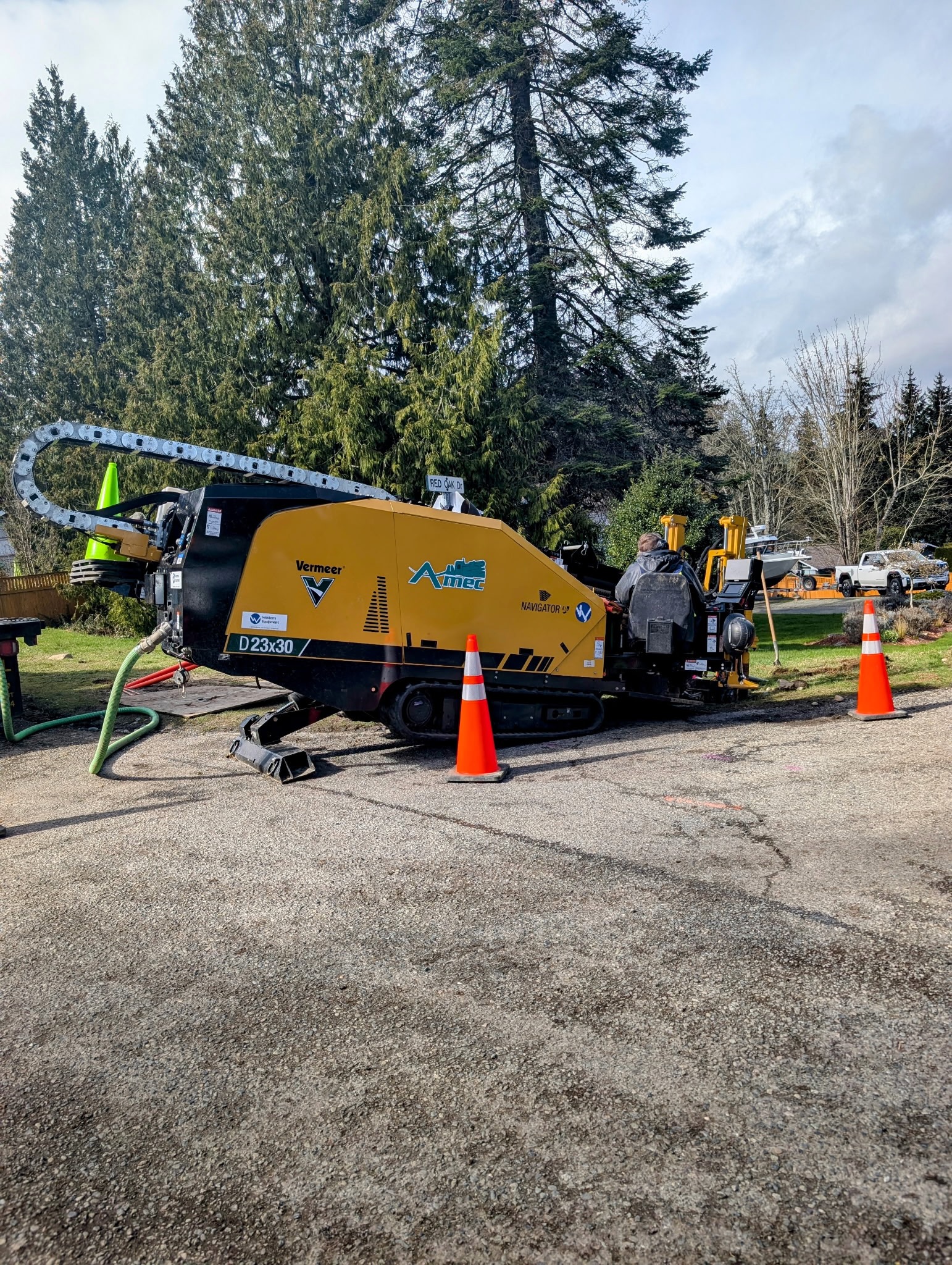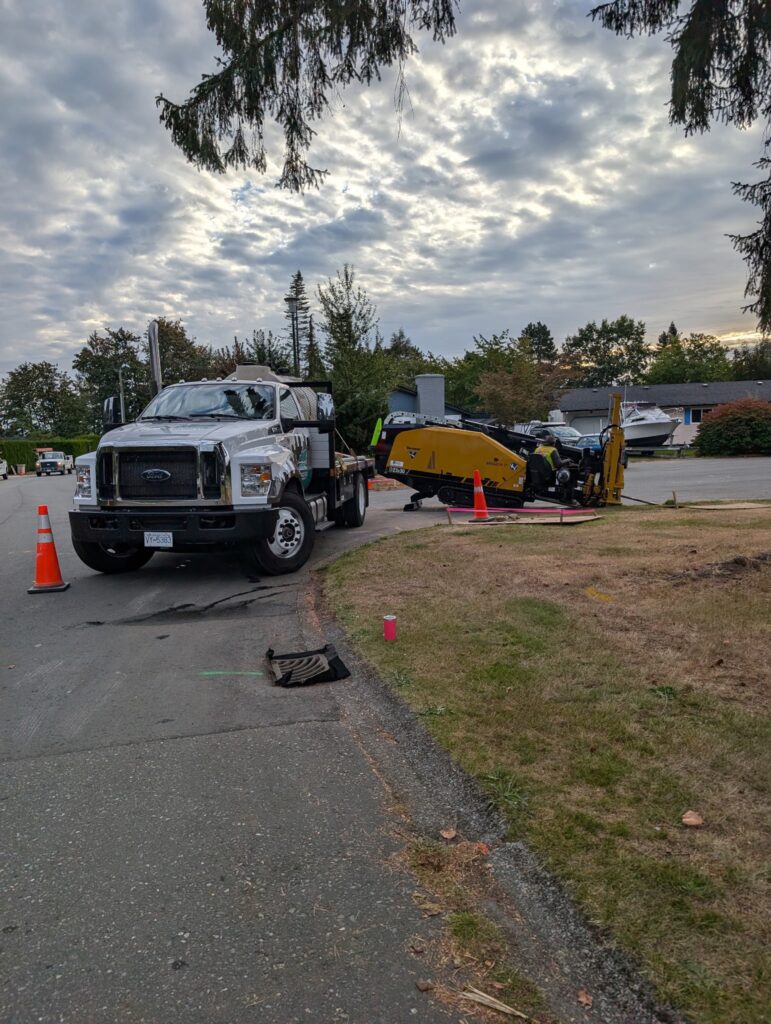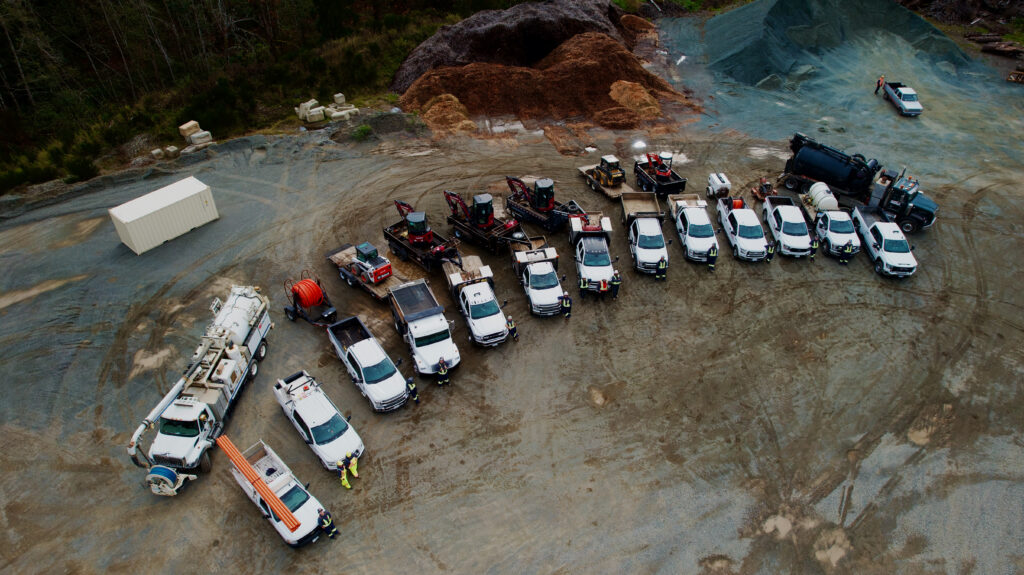Horizontal directional drilling (HDD) is a trenchless method used to install underground pipelines, cables, or conduits with minimal surface disruption. The process is typically completed in three main stages:
- Pilot Hole Drilling
A small-diameter pilot hole is drilled along a pre-designed path from the surface entry point to the exit point. The drill bit is guided using advanced tracking systems, and drilling fluid is pumped to the bit to aid cutting and remove soil. The operator can steer the drill head to follow the intended path, making adjustments as needed to avoid obstacles and maintain accuracy.
2. Hole Enlargement (Pre-Reaming)
Once the pilot hole is complete, it is enlarged using a reamer. The reamer is pulled back through the pilot hole while rotating, and drilling fluid continues to be pumped to remove cuttings and stabilize the hole. This step increases the diameter of the bore to accommodate the product pipe or conduit.
3. Pipe Pullback
The final stage involves attaching the pipeline, cable, or conduit to the reamer via a swivel (to prevent twisting) and pulling it back through the enlarged borehole to its final position. Drilling fluid is used during this process to lubricate the pipe and reduce friction.
HDD is especially useful for crossing obstacles like roads, railways, rivers, or environmentally sensitive areas, as it allows for installation without open trenching or significant surface disturbance.








